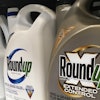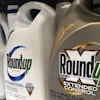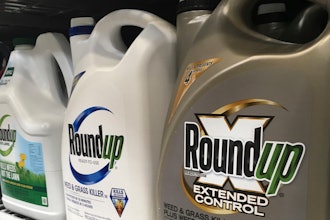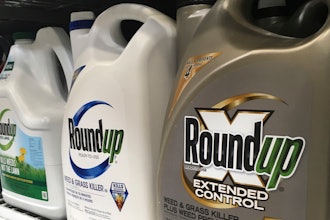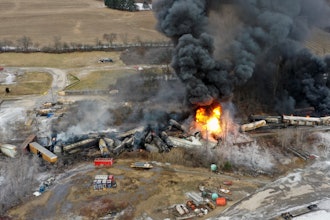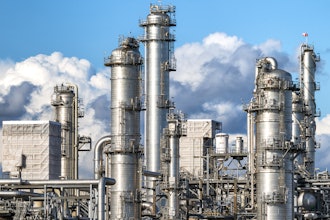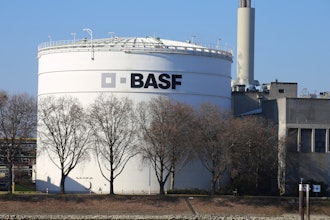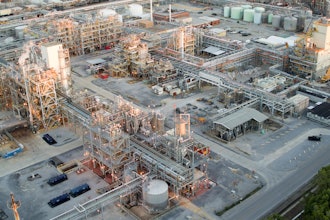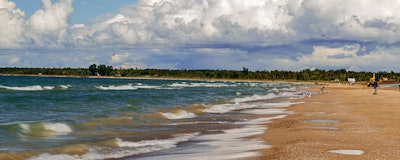
A worst-case scenario spill from the Enbridge Energy Line 5 pipeline through the Straits of Mackinac would affect more than 400 miles of shoreline in Michigan, Wisconsin, and Canada, according to a state-ordered risk analysis.
Such a spill would release 32,000 to 58,000 barrels of crude oil into the Great Lakes and put 47 wildlife species and 60,000 acres of habitat at risk, according to Michigan Technological University researchers.
Clean-up, liability, and restoration costs related to such a spill would add up to nearly $1.9 billion, according to the analysis of 4,300 spill simulations by Guy Meadows, director of Michigan Tech’s Great Lakes Research Center, and 41 experts.
The 396-page draft analysis released Thursday studied a worst-case scenario in which both Line 5 pipelines ruptured at the same time primary and secondary safety valves failed. The study looked at "events with low probabilities of occurrence but high consequences," according to the Michigan Department of Environmental Quality.
Michigan Tech researchers conducted the study over the first six months of this year at the request of state environmental, wildlife, energy, and legal agencies.
“This report highlights the need to continue developing a decommissioning strategy that protects the Great Lakes while at the same time maintaining the critical infrastructure between Michigan’s peninsulas that makes us one state,” Department of Natural Resources Director Keith Creagh said in a Thursday statement.
The scenarios in the report are “purely hypothetical” and “extraordinarily unlikely to happen,” Enbridge spokesman Ryan Duffy said in a Thursday statement.
Enbridge’s safety protocols on preventing a worst-case spill include a 24-hour control center, automatic shut-off valves, and trained employees who would be able to respond quickly, he said.
“We all agree that the state’s natural resources are a treasure that must be protected,” Duffy said. “While Line 5 continues to operate safely, and there never has been a release in the Straits since it was installed, the state and Enbridge are working on new safeguards to enhance pipeline safety.”
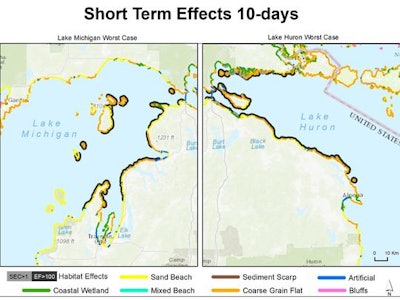 A diagram from a Michigan Technological University report shows shoreline habitats that would exceed thresholds for socioeconomic impacts 10 days after a worst-case spill from Enbridge's Line 5 in either Lake Michigan or Lake Huron, depending on the circumstances of the spill. (Michigan Technological University)
A diagram from a Michigan Technological University report shows shoreline habitats that would exceed thresholds for socioeconomic impacts 10 days after a worst-case spill from Enbridge's Line 5 in either Lake Michigan or Lake Huron, depending on the circumstances of the spill. (Michigan Technological University)The study complements an alternative analysis that explored the long-term fate of the 65-year-old pipeline, which carries up to 540,000 barrels a day of light crude oil and natural gas liquids through the Upper Peninsula and lower Michigan from Wisconsin to Ontario, Canada.
For the worst-case analysis, researchers studied the same spill volume across different seasons and weather conditions, noting in their report that a winter spill would be the most difficult to respond to safely. A spring rupture would include the highest economic costs, and a summer spill would pose the highest risks to public health because more people visit the area, according to the analysis.
The study analyzed five tiers of failure in Line 5. Those tiers ranged from a pinhole leak in the west line that was shut down within 3 1/2-minutes, an occurrence that would release roughly 4,400 barrels of oil, to simultaneous ruptures in both lines and automatic shutoff failures that would require a two-hour manual shutoff, resulting in a discharge of roughly 58,000 barrels of oil.
Modeling the incident on Michigan's massive 2010 inland Kalamazoo River oil spill was problematic because the diluted bitumin, or dilbit, involved in that spill is heavier than the fuel products in Line 5, researchers said. The Michigan spill was the worst in-land spill in U.S. history and resulted in a $177 million fine from federal officials and a $75 million settlement with the state of Michigan.
The BP Deepwater Horizon spill in 2010 and the Exxon Valdez oil spill in 1989 were useful, but did not pose an immediate risk to the drinking water supply as would be the case for a spill in the straits, according to the study.
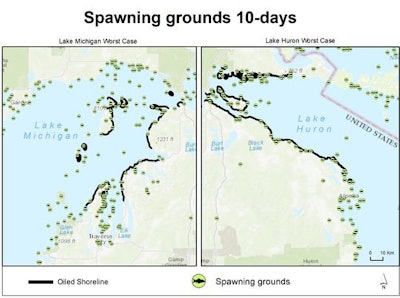 A diagram from a Michigan Technological University report shows how a worst-case scenario spill from Enbridge Line 5 would affect shorelines and spawning sites of fish in either Lake Huron or Lake Michigan, depending on the circumstances of the spill. (Michigan Technological University)
A diagram from a Michigan Technological University report shows how a worst-case scenario spill from Enbridge Line 5 would affect shorelines and spawning sites of fish in either Lake Huron or Lake Michigan, depending on the circumstances of the spill. (Michigan Technological University)Environmental activists have long called for a Line 5 shutdown, warning an accident like the 2010 oil spill in the Kalamazoo River could devastate the Great Lakes.
The Michigan League of Conservation Voters renewed that call Thursday, saying the report reinforces the belief that "oil pipelines do not belong in the Great Lakes."
“Each day oil pumps through Line 5 under the Straits of Mackinac is another day we risk an oil spill that would devastate our precious Great Lakes, upend our recreation and tourism industries and cost our state billions of dollars,” LCV Executive Director Lisa Wozniak said in a statement.
State and industry officials have argued a complete shutdown would affect Upper Peninsula residents. As of June 2016, about 55 percent of Michigan’s propane demand and 65 percent of Upper Peninsula demand was met through the pipeline.
Republican Gov. Rick Snyder has already indicated he wants Enbridge to move Line 5 into a new tunnel beneath the Straits of Mackinac, a possibility the company called “feasible” in an earlier report.
Environmental groups have called for the immediate shutdown of Line 5, which was dented by an anchor strike in early April that also ruptured underwater transmissions cables.
The state is expected to decide the next steps for Line 5 by this fall.
(Source: The Detroit News)

